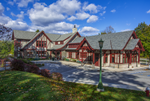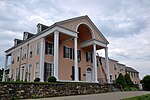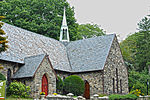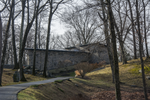Briarcliff College

Briarcliff College was a women's college in Briarcliff Manor, New York. The school was founded as Mrs. Dow's School for Girls in 1903 at the Briarcliff Lodge. After Walter W. Law donated land and a building for the college, it operated at its location at 235 Elm Road in Briarcliff until 1977; closing due to low enrollment and financial problems. Pace University subsequently operated it as part of its Pleasantville campus from 1977 to 2015. In an effort to consolidate its campuses, Pace University sold the campus in 2017 to the Research Center on Natural Conservation, a host of conferences relating to global warming and conservation. The campus was again sold in 2021, to a Viznitz Yeshiva congregation.
Excerpt from the Wikipedia article Briarcliff College (License: CC BY-SA 3.0, Authors, Images).Briarcliff College
Elm Road,
Geographical coordinates (GPS) Address Nearby Places Show on map
Geographical coordinates (GPS)
| Latitude | Longitude |
|---|---|
| N 41.1384 ° | E -73.8248 ° |
Address
Pace Univeristy Briarcliff Campus
Elm Road
10510
New York, United States
Open on Google Maps






